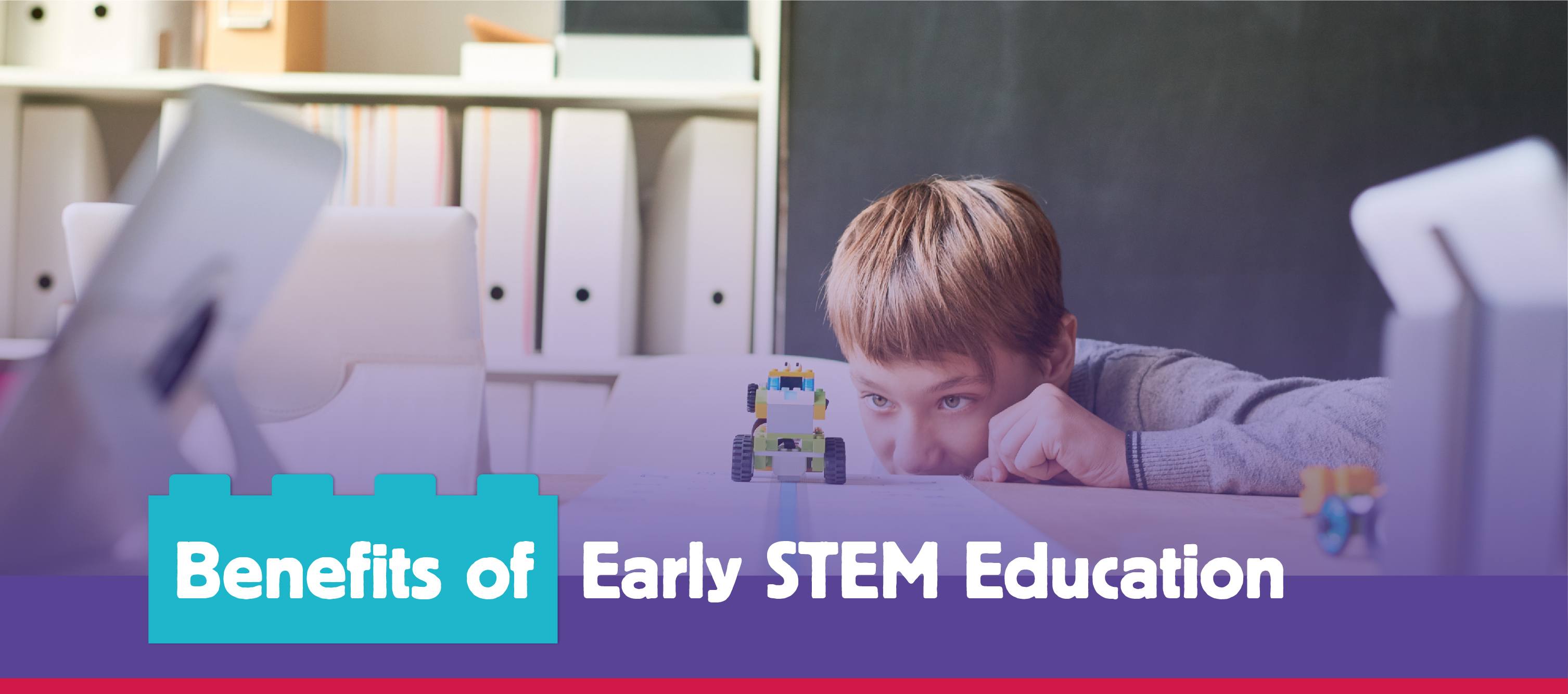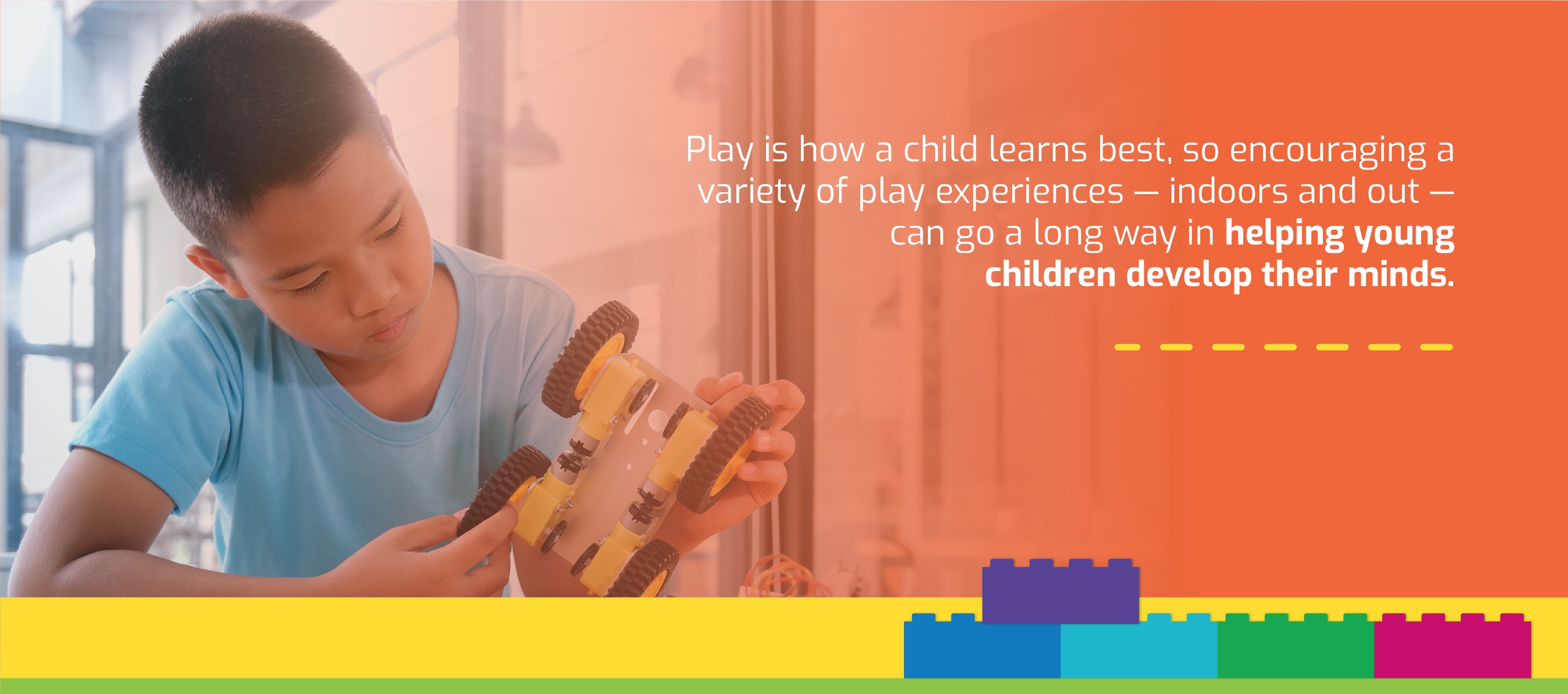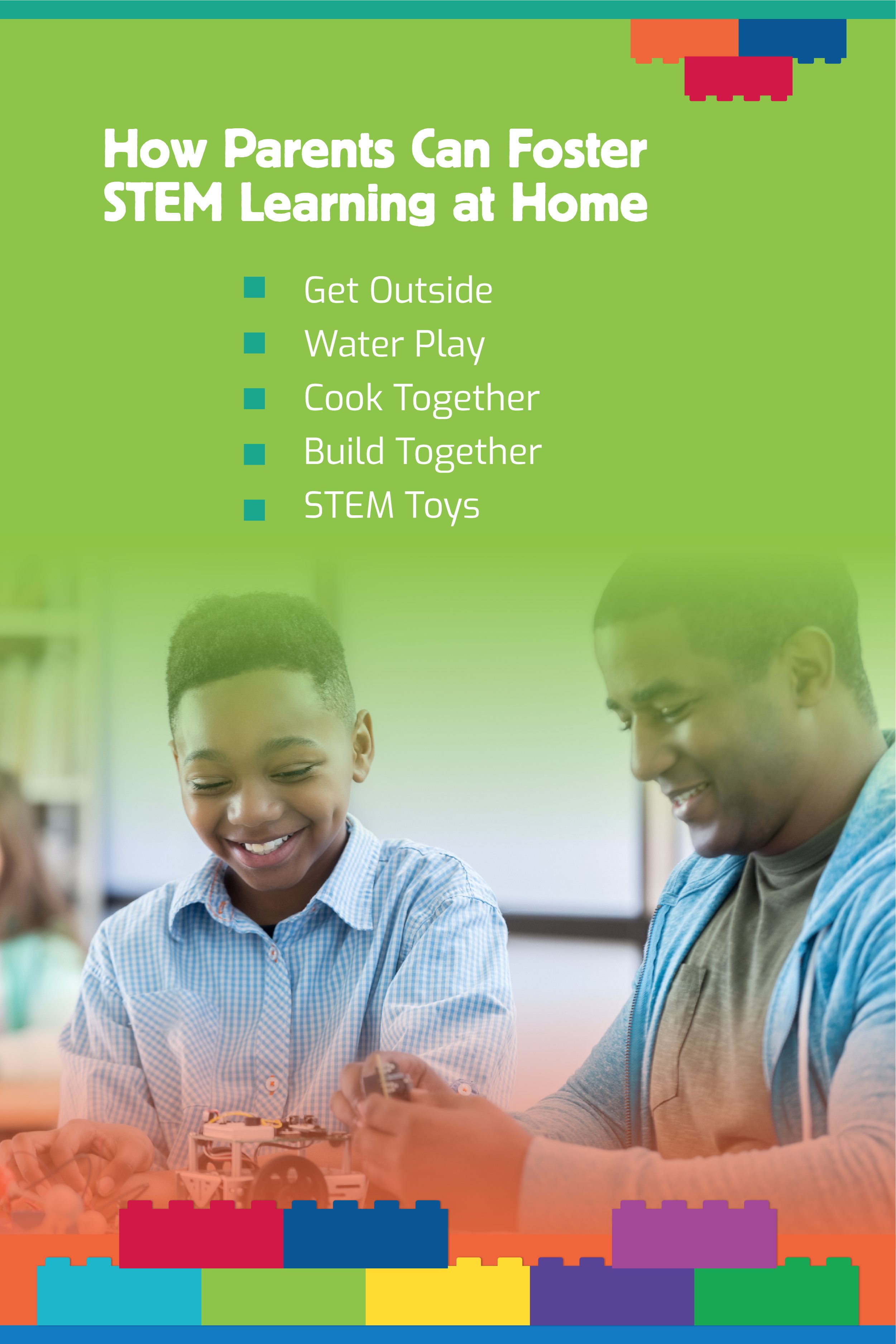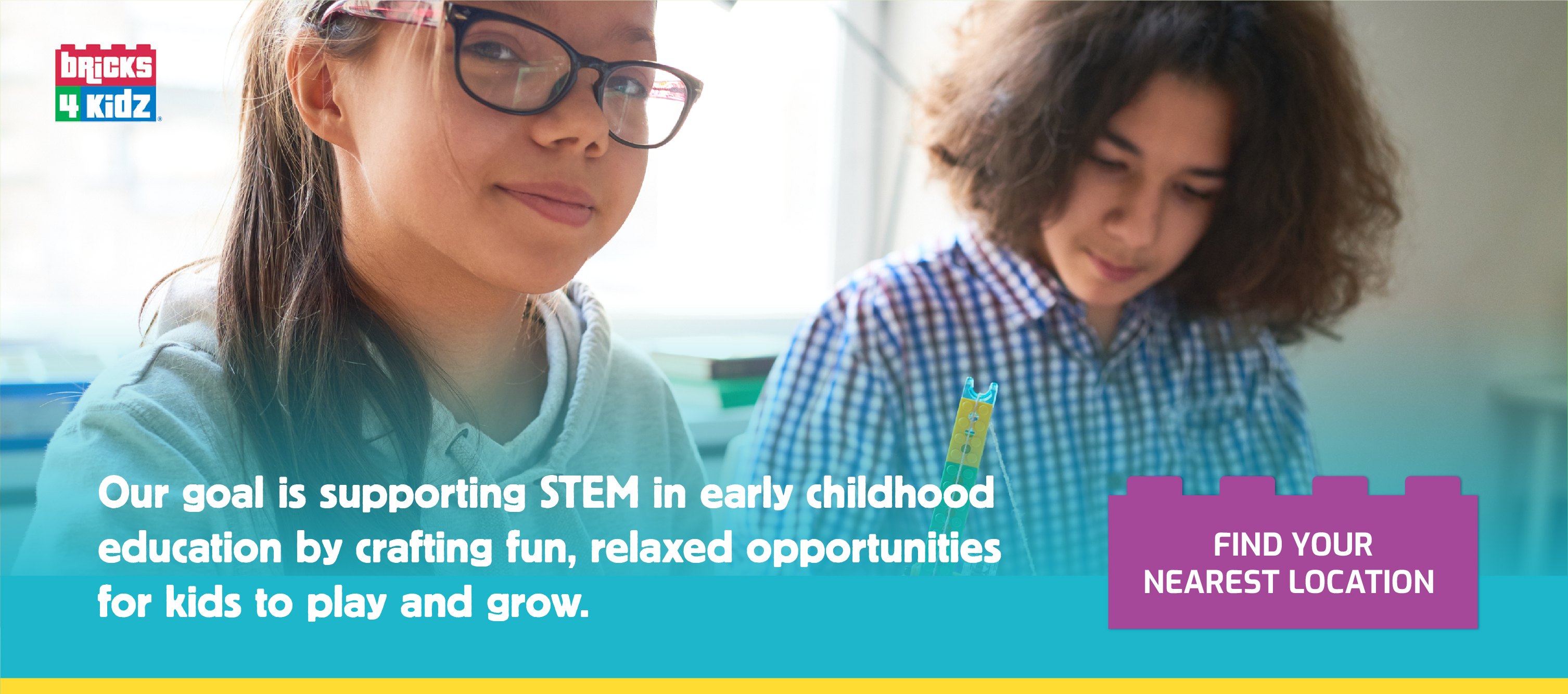
By the time a child is 5 years old, their brain has grown to 90% of its adult size. This means that the first five years of a child’s life encompass some of the most extensive learning and growing a child will ever do. Some parents and even teachers mistakenly believe that a child’s early years should be focused on literacy and the “other stuff” can come later. While literacy certainly does impact a child’s ability to discover and interpret information, it’s only part of the puzzle when it comes to early childhood education.
Science, technology, engineering and math (STEM) education is an essential part of a young child’s education. But STEM education goes beyond classroom curriculum and teaching children an appreciation for math and technology — though both are definitely important too.

What is STEM education? STEM education is an intentional focus on enabling children to think critically, solve problems, anticipate cause and effect, and reason about the probability of an event.
Children are born with the ability to develop these skills. Even infants show signs of STEM thinking when they anticipate feeding time or engage in exploratory play as they begin to crawl. But to hone these innate abilities and turn them into huge academic and vocational assets later in life, children’s brains need to be appropriately encouraged and stimulated.
Why Early STEM Education Is so Impactful
Research shows there are many benefits to early STEM education. So what are they? And how can parents incorporate STEM into their child’s earliest and most formative years?
To understand why STEM should begin in early childhood, it’s first important to understand what the term “STEM” includes. Many people are familiar with the acronym and what it stands for, but most people don’t realize that it encompasses more than simply learning math equations and memorizing chemical formulas. In fact, STEM education isn’t so much about rote memorization as it is learning to explore, ask questions and solve problems.
The reason STEM education has become such an essential component of today’s educational strategies is that STEM principles are critical to success in the global marketplace. Understanding how things are made, how they come together and how they come apart is essential to just about every career field you can think of. The critical thinking needed to solve problems, invent new computer programs and design innovative buildings and vehicles is crucial to innovation and advancement around the globe.
STEM principles and education are being incorporated into K-12 curriculums throughout the country, but most curriculums don’t incorporate significant instruction in these areas until the third grade — when most children are around 8 years old. This means that by the time most children encounter significant instruction in science and technology, they are well past the 0-to-5-year window of brain development when their brain is working overtime to grow and develop the skills they’ll need for the rest of their life.
Myths About What Early STEM Education Looks Like
One of the biggest reasons for the gap between a child’s most formative years and the beginning of STEM education is a lack of understanding about what STEM is — and what it’s not. Among the many misconceptions about STEM education, there are three that tend to be prevalent among parents and educators.
1. STEM Education Means Spending All Day Learning Math and Science
Most people are surprised to realize that early STEM in early childhood doesn’t look like school at all. One big emphasis in STEM in early childhood education is problem-solving. For young children, this can take shape in several ways. For example, instead of dressing your child each morning, walk them through the steps to dress themselves, saying things like, “You need to get dressed. What should you do first? Where do your dirty clothes belong? What will you do today if you get cold in that T-shirt?” As you walk them through this process, they are practicing problem-solving and training their brains to use this method in other day-to-day situations.
2. Only “Math People” Understand STEM
Although some individuals show a tendency to enjoy one subject over another, anyone can grasp STEM principles and flourish as they begin to incorporate them into daily life. Baking cookies with your child or putting together a puzzle are both STEM activities. So is taking a nature walk. In fact, spending time exploring the park near your house is a simple — and fun — way to encourage children to hone their scientific skills of exploration and discovery as they engage in the world around them. The scientific facts they learn by observing plants and animals are an added bonus!
STEM training for early childhood can also have a positive impact on a child’s literacy and language development. As children learn more about the world around them, they ask questions and talk about their discoveries. This helps them practice and expand their language abilities. STEM and literacy also go hand-in-hand. Besides helping children expand their vocabulary, the sense of discovery equips children to have better reading comprehension as they learn to read. Since they understand more about how the world works, they can identify key characters and events in a story.
One of the big benefits of early STEM exposure is a child’s ability to apply those same principles to other interests that normally wouldn’t be classified as “STEM,” such as music or the arts. Artistic expression comes from observations of the world, as well as practiced study of a particular medium. After all, a musician learns by studying and practicing a skill over and over again, taking the time to apply critical thinking and reasoning skills as they learn how to make each note sound as it should.
3. Real Learning Happens in School
School isn’t where learning starts — it’s where your child will begin to combine all of their skills and knowledge into organized, focused tracks of education and thought. The early years of a child’s life are vitally important to the rest of their academic career. Even time spent playing with cars and trucks at home or swinging on the playground provides opportunities and experiences for children that will prepare them to succeed academically.

Parents who encourage a variety of experiences in their child’s early years of development are setting them up for success when they are introduced to more formal STEM principles. But that doesn’t mean you need a formal lesson plan or daily activities to engage your child in the world around them. Play is how a child learns best, so encouraging a variety of play experiences — indoors and out — can go a long way in helping young children develop their minds. There are even some great STEM toys on the market today specifically designed to stoke a child’s interest and ability to engage in problem-solving, troubleshooting, putting things together and other skills they’ll need later on.
Formal vs. Informal Early STEM Education
Why is STEM important for childhood education? It’s easy to say that “real” learning doesn’t start in school, but this can be confusing for many parents. After all, the term “learning” is often synonymous with formal classroom settings and, for some parents, the idea that they should be their child’s teacher can be intimidating. For this reason, it’s important to distinguish between formal and informal STEM education.
Formal STEM education refers to what happens in the classroom. But we aren’t just talking about math or science worksheets. Formal STEM education includes:
- Real-world applications: Rather than simply teaching students to recite their multiplication tables, STEM education takes the same principles and teaches children real-world applications for the math concepts they’re learning or the scientific principles they’re studying. They ask questions, solve problems and learn to apply practical principles to real-world problems.
- Collaborative thinking: When students work collectively, they help each other approach a task or problem from several points of view. They ask questions, challenge each other and learn to collaborate as they will in the workplace when they’re adults. This might take the form of a group science experiment. It might be seen in a unit on robotics where students learn to build their own robots.
On the other hand, informal STEM education refers to the activities and experiences a child has outside of the classroom. These can include visits to a museum, weekly library visits, playing outside or simply sitting at the dining room table playing with blocks. In fact, informal STEM education often masquerades as fun!
How Parents Can Foster STEM Learning at Home

Ultimately, a parent’s goal should be for their child to receive a mixture of formal and informal STEM education as they grow and develop. Wondering how to encourage STEM at home? Here are some simple ways you can guide your child toward STEM principles without being formal about it.
1. Get Outside
It sounds so simple, but there are so many ways to engage children in a variety of STEM activities when they’re outdoors. Follow butterflies around the yard to see what bushes they like to land on. Gather leaves and study them to learn which kinds of trees they come from. Take a walk and talk about the different buildings you see — what are their shapes and what materials are they made from? If you’re crafty, gather leaves and other items from your walk, then go home and have your child create a picture of what they saw or a collage of everything they found. You can’t go wrong with incorporating art into STEM activities too.
2. Water Play
It’s a fact: kids love water. Use a pool or a big bucket to test which objects float and which sink. Give them a second bucket and have them brainstorm about how to move water between the two buckets. During the summer, set up a sprinkler in the backyard and then watch your child learn how to predict the sprinkler’s spray patterns so that they can either run toward the spray or duck away from it at the last second.
If you’re looking for less messy ways to do this, you can substitute sand, beans, rice or dried corn for the water. Children can scoop, dump, push and feel the different materials as they figure out how to put them into containers or move them from one spot to another.
3. Cook Together
Cooking is such a normal part of our daily lives that we forget how much science goes into making something as simple as a pitcher of lemonade. When you cook together with your child, you teach them how to measure things and what happens when you combine ingredients. You teach them how to follow directions and critical thinking along the way. Plus, there’s nothing better than watching a child’s confidence grow when they taste something they helped make.
4. Build Together
STEM learning in early childhood is fun. Wooden blocks, playdough, DUPLO® Blocks and LEGO® Bricks — the sky is the limit. When you give your child toys that require them to use both creative and critical thinking skills, you’re helping them exercise their STEM skills and expand their minds. Encourage them to create and build things. They can follow directions to create certain structures and shapes or they can use their imaginations to create their own items.
5. STEM Toys
Although there are plenty of easy, yet creative, ways to incorporate STEM learning into your daily life, if you need an extra dose of STEM, there are dozens of STEM toys on the market that can give your kids hours of open-ended play and exploration. These toys are designed for hands-on exploration. Although they do come with directions and patterns to get your child started, the cool thing about STEM toys is that they’re designed to be played with in many different ways, encouraging each child to design and build whatever they can imagine.
How Early STEM Play Allows Kids to Explore
Wondering what age to start teaching STEM? The truth is that it’s never too early. There’s not a toddler out there who hasn’t pulled books off of a shelf or cans out of a cabinet. Children are born with a natural curiosity that spurs them to take things apart and put things together. What can seem like a mess to most parents is actually the tangible demonstration of how your child’s brain is working to grow and process information. So next time your child makes a mess, fight the urge to get mad and look at it as early STEM education for toddlers!
Believe it or not, that natural inclination to make messes and explore the world is shaping your child’s future interests and passions. We’re not suggesting that every child will grow up to build bridges — or take them down — but their natural curiosity, their ability to question the world around them and their understanding of cause and effect will spur them on to success in a variety of career fields.
As they grow, your child will be faced with the decision of what they want to do with their life. Will they become a doctor? A teacher? A chemist? A musician? Regardless of what career field they choose, they’ll succeed because they are intelligent and understand how the world around them works. It’s not about simply helping children recite facts and add numbers. Early STEM play and exploration teaches children what to do with all of those facts and numbers once they know them. It teaches them how to look at a problem from many different angles and approach it with confidence and intelligence every step of the way.
Bricks 4 Kidz
At Bricks 4 Kidz, we firmly believe that children learn best when they’re learning through play. Offering programs for children ages 3 and older, we use LEGO® Bricks to provide a safe, relaxed atmosphere where children can create and discover. Our goal is supporting STEM in early childhood education by crafting fun, relaxed opportunities for kids to play and grow. During one of our classes, camps, parties or workshops, children can work with project models and themed kits that are designed to encourage problem-solving and appreciation for how things go together. It’s also a great way to have fun and meet other kids.
With locations all around the country, there’s bound to be a Bricks 4 Kidz near you. Find your nearest location and sign your child up today.
